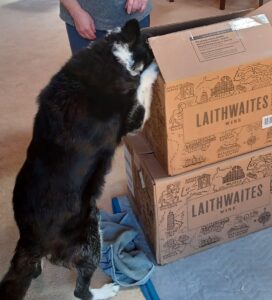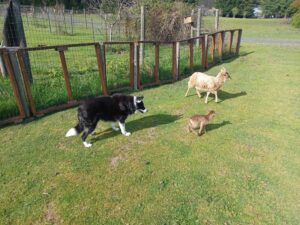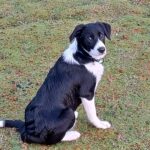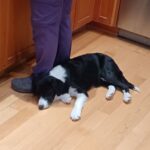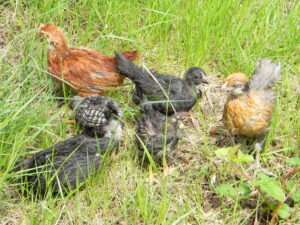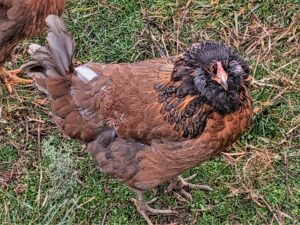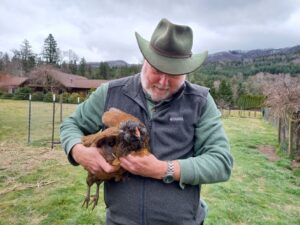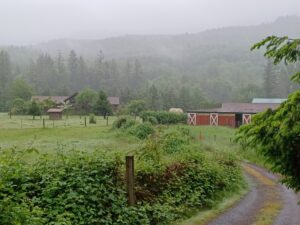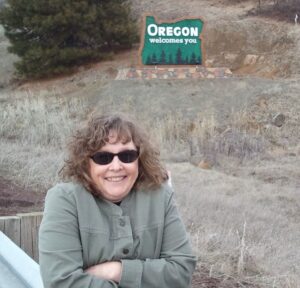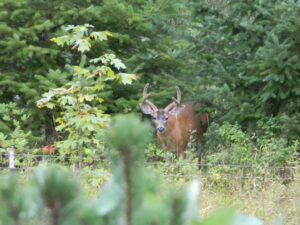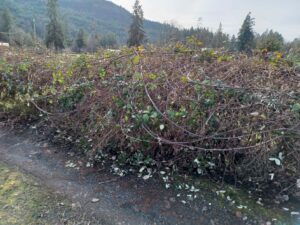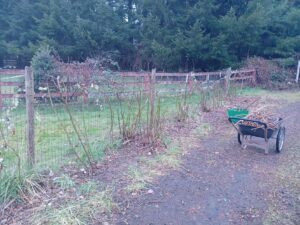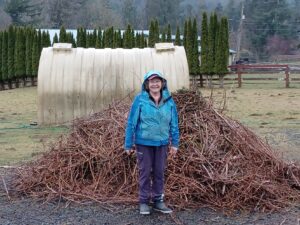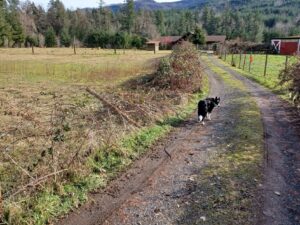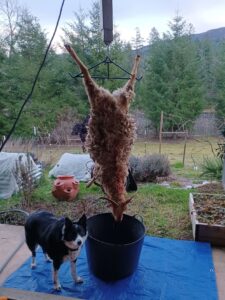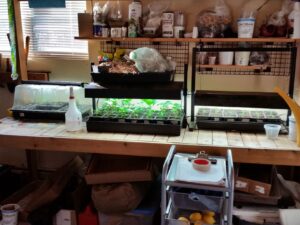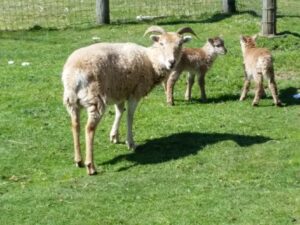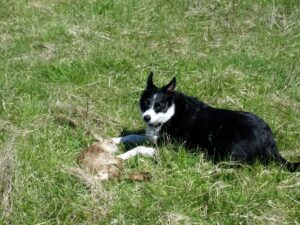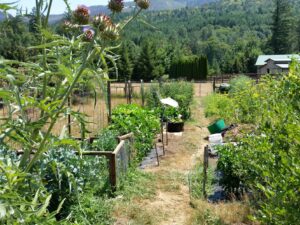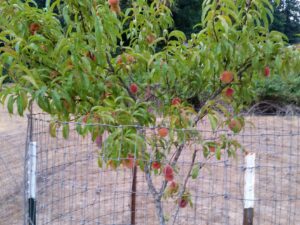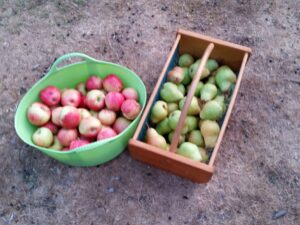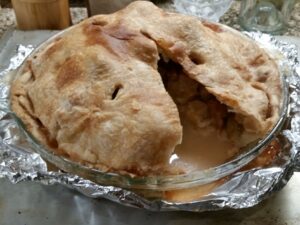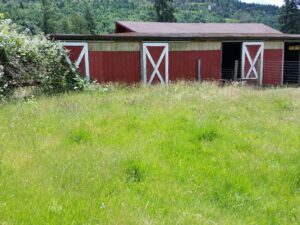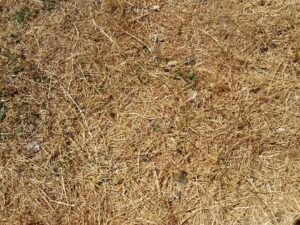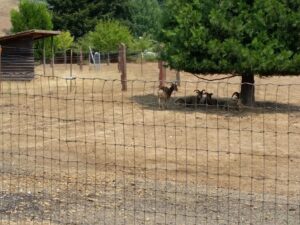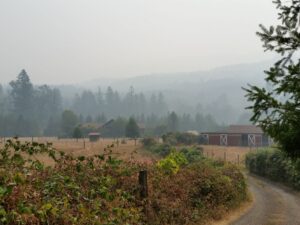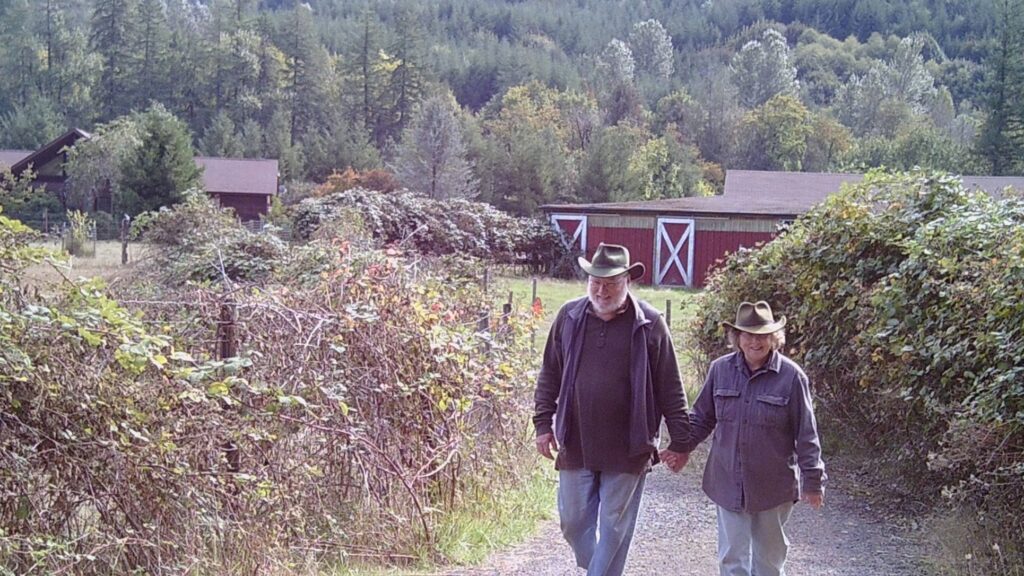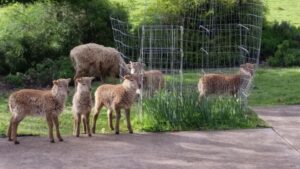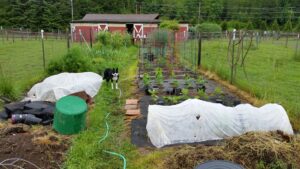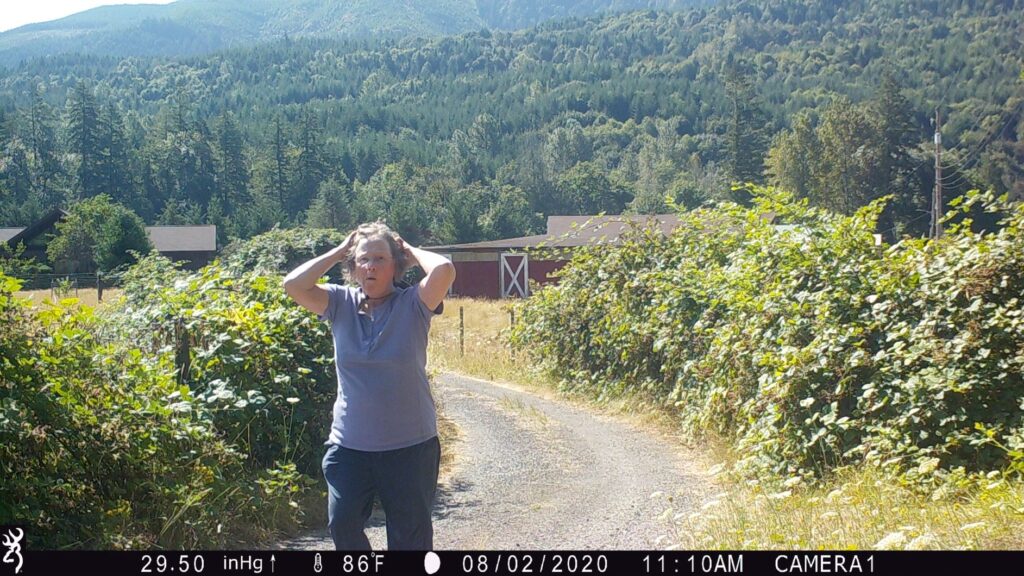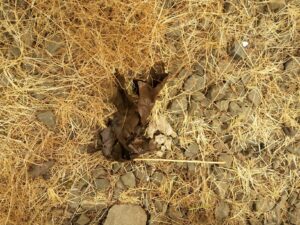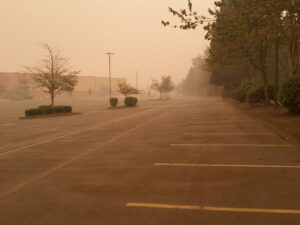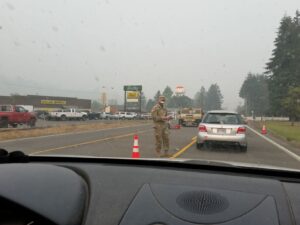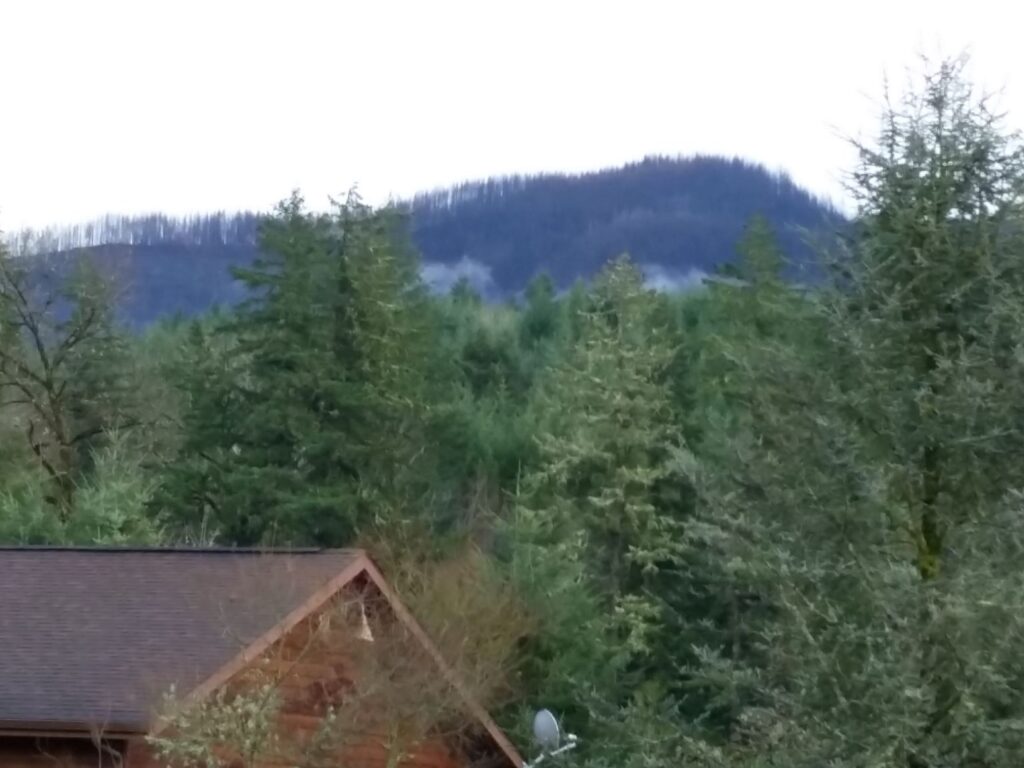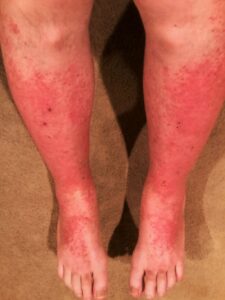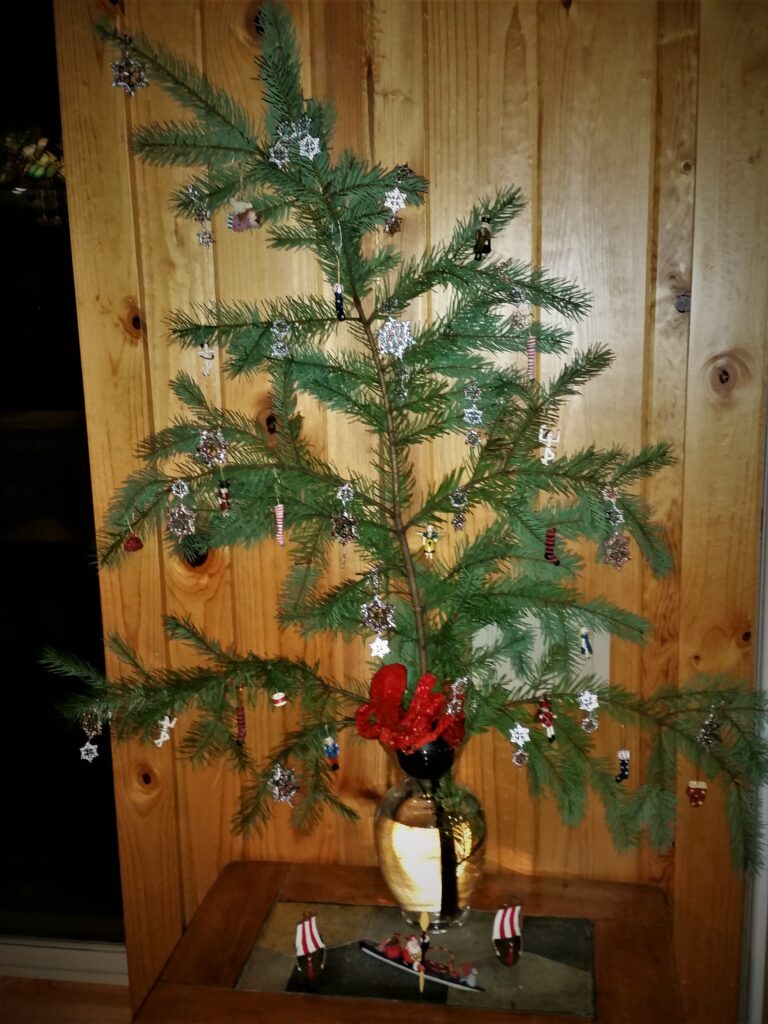The next post after my “Bumpy Year” was supposed to be an explanation of what happened in 2024. But Jeanette and I have unfortunately recently been dealing with a different type of bumpiness.
Our very beloved border collie, Sigrid, has been a member of our family, an important farm partner, and the very dearest of friends ever since April of 2013. She is gone now.
I have had dogs for most of my life, and they have all been, in one way or another, good dogs. But Sigrid was in a class of her own. I have never known a smarter dog. Her vocabulary of words she understood was enormous. Her face could be incredibly expressive, including a look that was as obvious a happy smile as I’ve ever seen on a human being, and a totally different sly grin, which she would use whenever she was teasing us—something she loved to do.
She enjoyed playing games with us. A favorite was for us to hide a raggedy old stuffed animal, a platypus, she’d had since she was a puppy, somewhere out in our great-room, then she would search for it, using all of her senses, because sometimes we’d hide it where, if she looked in the right place, she would see it, but other times where she couldn’t see it, such as inside a box, so she’d have to locate it by smell, then figure out how to get into the box to retrieve it. We called this game the “Mighty Hunter” game. Jeanette would sneak out of our bedroom every morning after we first woke up, and hide Platypus, then when we all went out, while I was getting treats ready to take up to the chickens and sheep, Sigrid would go on the hunt. She liked to have an audience for her discovery, so if we happened to not be watching when she located Platypus, she would lay down and point at it until we noticed.
Just in the past year she started adding her own modifications to the game. After she found the toy, while she was waiting for us to get ready to go to the barn, she would lie down leaving Platypus some distance away, pretending to have forgotten about it, making it available to be surreptitiously scooped up and hidden again. That was usually Jeanette’s role, and Sigrid came to clearly enjoy pretending she didn’t see Jeanette hide the platypus again, then would “wake up” and go right to where it was hidden, wearing that sly, teasing grin on her face the whole while.
She was so affectionate—we got lots of kisses–and loved making friends. Our regular Fed Ex route driver, Matt, always said she greeted him more excitedly than his own dog did.
She was also a true farm working dog. She had strong instincts, and could absolutely dominate and control the sheep, although because she’d never had any formal training, she didn’t always get it quite right. Not infrequently, if we were trying to move one or more sheep to a specific location, she would decide that it was her duty to instead hold them in place, which she was very good at. And she loved to run, and when she was younger used to go so, so fast. Another game that was a favorite of hers for years was for me to throw a fetch toy high and far, and she would race after it, watching it as it flew, with the goal of being in place to catch it on the first bounce when it came down.
She started slowing down about a year ago. She developed some arthritis in her right front shoulder, which made it harder for her to run fast. She still wanted to, but we had to stop playing the fetch game, because her arthritic shoulder caused her to trip and fall a number of times as she ran, and we feared she might eventually seriously injure herself.
Jeanette and I like to hike in the hills above our farm as our cardio exercise, and Sigrid loved to accompany us. We didn’t hike at all in 2024, though—for much of the year because of a health problem (one of those “bumps”), then later because we were so behind on everything farm-related due to the several health issues. But in November, we started trying to get ourselves, and Sigrid, back in shape enough to resume hiking, by just going for walks along the street our farm is located on. But Sigrid struggled with that, and would frequently seem exhausted, and/or very stiff and sore, for the rest of the day afterwards. In late November, after a walk, she had such a hard reaction to it that she almost couldn’t walk at all for the rest of the day, and had very limited mobility for several days after, with one of her hind legs frequently seeming to give out under her. We were afraid she had developed severe hip dysplasia, and were very worried that if it was bad enough, she might have to be put down. But after a lengthy (and quite expensive) day at our veterinarian’s office, it was determined that her hips were fine, but she had developed bone spurs in her left rear ankle. After a period of trial and error, the vet hit upon a combination of medicines that seemed to tame the pain most of the time. Sigrid gradually adjusted to her new normal, with much more limited activity. She would still play the Mighty Hunter game every morning, and afterwards would accompany us on our morning chores, going to the barn, feeding the sheep and chickens, checking for eggs, etc., but then she would nap for most of the rest of the day. We felt relieved, though, that she seemed to be doing better, and began to hope we might yet have more years together with her.
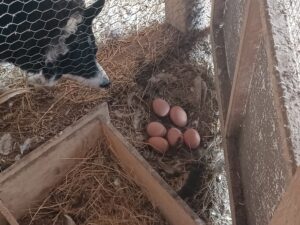
Sigrid discovered a nest on the ground that several of our chickens had created in the coop, on what turned out to be her last trip to the barn with us.
It was not to be. The last week of February, she didn’t have very much appetite, and it became harder and harder to coax her to eat something. She still went with us to the barn every day, though, and was still firmly in charge of supervising the sheep and chickens, including on Saturday, March 1st. But that night, when we gave her a little vanilla ice cream as a special treat to tempt her to eat—it was a favorite of hers—she threw it up. We later the next day found that she had quietly, secretly gotten sick several times over the course of the night.
Sigrid has always been very protective of us, and for many years has taken it upon herself to watch over us during the night. The foot of our bed faces a sliding glass door that serves as, in effect, a large window looking out across most of our farm. Sigrid usually slept on the foot of our bed between us, facing out toward the window, usually with her head against Jeanette’s foot and a hind leg stretched out and touching my leg, ready to wake up and alert us if she heard or saw anything worrisome.
Sunday morning, March 2nd, she woke us up for a different reason. She had crawled up between us, facing toward our heads now, and was whimpering. At first, I thought perhaps her shoulder or leg was just sore, and lay there half awake, rubbing it, but Jeanette quickly realized it was more than that. Sigrid was dying, and was telling us something was very wrong with her.
Had it not been a Sunday, we probably would have rushed her to the vet’s office—it’s just about two miles up the road—and they, after examining her, would have no doubt said there was nothing that could be done other than to end her suffering. And we almost certainly would have said yes, please do that. We are so glad it was Sunday, though. Sigrid hated going to the vet, and it would have caused her a lot of extra distress and anxiety in her final time. As it was, we held her and loved on her, bringing her as much comfort as we could, over her final hours. And she really didn’t want to leave us, and fought it hard. She would burrow her head against my arm, or Jeanette’s, and would whimper, in between gasping, shallow, rapid breaths that we kept hoping was the start of agonal breathing, signifying that the end was near. But then, about every twenty minutes or so, she suddenly raise her head up, and look at us and give us that big, happy smile she had, as if she was saying, “It’s okay, guys. I’m still here. I’m not going to leave you.”
It took four long hours before she finally did leave us. It was both terribly sad, but also a very sweet, touching chance for us and her to say goodbye, and to share our love for each other until the very end.
We still see and feel her absence multiple times and places every day, and miss her terribly. Our lives go on, but right now there is a big hole in them.
Update: April 07, 2025
A year or two ago some of our good friends, who live on a property down the street from our small farm, lost their dog. They are both in their early 80s, but are quite fit and active ( I personally believe that living on a small farm helps keep you mentally sharp and physically active as you age, due to all of the challenges that must constantly be dealt with). Despite–or perhaps because of–their age, they got a new puppy within two weeks. Jeanette and I thought that was very wise.
After considerable searching, we located a border collie puppy that was available from a farm family in Oregon, rather than a puppy mill breeder. We brought her home a little over a week ago. She’ll be five months old next week, and is an absolute sweetheart, very affectionate, though she can be pretty full of mischief at times. In honor of our first Sigrid, we’ve named her Sigrid, too (or Sigrid 2, when we’re differentiating between them).








